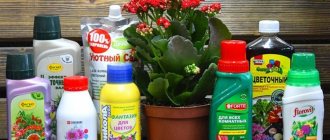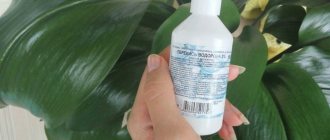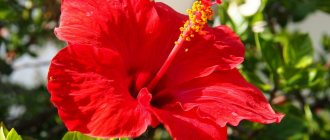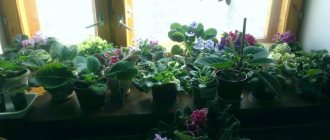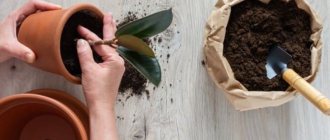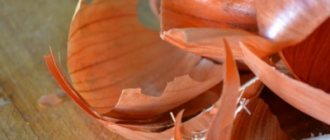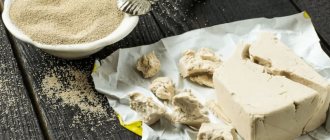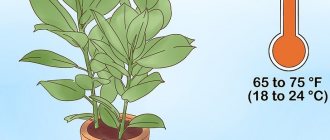Sooner or later, every gardener thinks about how to feed indoor plants so that they develop and bloom better. And this is where the fun begins, because there are many fertilizers. Which one should you choose? Let's figure it out together!
When choosing food for indoor plants, you should consider many factors. The type of plant, its state of health, the period of development - these are just the main points that you should pay attention to before starting the procedure. To orient you in the world of fertilizers, we will consider their main types, advantages and disadvantages.
Mineral fertilizers for feeding indoor plants
As you know, all plants need nitrogen, potassium and phosphorus, as well as various microelements (iron, copper, boron, manganese, sulfur, etc.). It is thanks to these substances that full growth and flowering are ensured and immunity is increased. The appearance of the leaves and stems will tell you that the plant is missing some element. But you shouldn’t let the plant become exhausted; it’s better to feed it regularly, at least in small quantities. We will look at which ones are better to choose below.
Mineral fertilizers for potted flowers are usually produced in liquid and dry forms (granules, powder, tablets, capsules and sticks). In terms of their composition, they can contain only one nutrient element (for example, nitrogen or phosphorus) or a complex of them (universal fertilizers). Mineral fertilizers should be used throughout the season, usually from spring to autumn. If you buy a ready-made product, always pay attention to the ratio of nitrogen, phosphorus and potassium (NPK) in its composition.
- NPK - what is it, how to determine the composition and amount of fertilizer
What kind of mysterious abbreviations are found on every pack of fertilizer and why are they needed in the daily life of an ordinary gardener?
Thus, the 11-6-9 ratio with a large amount of nitrogen is more suitable for young plants that need to increase their green mass. If the numbers are approximately like this - 7-9-13 - then the fertilizer contains a lot of phosphorus and potassium, which are necessary for flowering plants. The 13-15-18 mark usually indicates that the fertilizer is universal, it has all three components balanced, and it can be used in all situations.
You can also find ready-made products for succulents, ficus, violets, etc. in stores. Such drugs are very convenient to use. But if you have many different colors, then the situation becomes more complicated. Not everyone can afford to buy a package of products for each flower. And the expiration date may expire before you use up the drug. Therefore, in this situation, it is better to choose fertilizers for all types of plants. A note about this will appear on the packaging.
Look for products labeled “chlorine-free” and “nitrate-free.”
Typically, for healthy plants, choose a universal liquid fertilizer, which is diluted in water and applied according to instructions 1-2 times a month. The advantage of such fertilizers is that they can be used not only for watering, but also for spraying. Among the popular brands that produce fertilizers are the following: Agricola, Fasco, Zdraven, Pocon, Bona Forte, etc. When choosing, be sure to study the packaging and instructions for use.
An excess of nutrients is much more dangerous than a deficiency, so carefully monitor the appearance of the plant and if signs of an overdose appear (excessive growth of green mass, brown or light spots on the leaves, etc.), stop feeding, otherwise the flower will die.
The only disadvantage of liquid fertilizers is their fairly high price. Therefore, many flower lovers choose dry fertilizers, which need to be diluted in water themselves. Granules or powders are usually diluted in 10 liters of water, so such fertilizers are especially relevant for owners of a large number of potted plants.
Disadvantage of sticks and tablets: uneven distribution of substances, so some gardeners crumble the preparations and apply them around the entire perimeter of the pot, which is not always convenient
If you do not want to buy store-bought preparations, you can apply mineral fertilizers yourself. The same substances that you use for garden crops are suitable for this, only the concentrations will be different. In order not to make a mistake with the choice of fertilizing, we recommend reading about the signs of a lack of nitrogen, potassium or phosphorus.
- Nitrogen, phosphorus, potassium - signs of deficiency and excess in plants
What do excess or deficiency of nitrogen, phosphorus and potassium lead to? Find out in our infographic!
| Types of fertilizers | Titles | Consumption rate (per 1 liter of water) |
| Nitrogen | Ammonium sulfate, ammonium nitrate, urea (urea) | 1 g |
| Potash | Potassium sulfate, potassium salt | 1.5 g |
| Phosphorus | Superphosphate | 3-6 g |
For flowering plants, you can prepare the following mixture: dilute 3 g of superphosphate, 1 g of ammonium nitrate and 1.5 g of potassium salt in 1 liter of water, mix thoroughly and water the flowers.
Description
Fertilizer in seed and tablet format
This fertilizer is often used if you want to worry less about feeding the plant. Since the fertilizer will be in the form of granules, it will dissolve in the soil for several months and nourish the soil all this time. But if you need a smooth distribution of fertilizer, then there will be some problems with extraction. Such tablets are usually placed on the side of the pot, and they gradually dissolve during watering.
Fertilizer in seed and tablet format
Liquid fertilizer
Liquid fertilizer is perhaps the most popular product among others, as it has a very convenient format. Liquid fertilizer is an ideal option for quickly feeding the plant. Because it will instantly dissolve and get to the roots. All the elements necessary for feeding are combined and have a convenient liquid form, but there may be problems with the concentration of the product and sometimes you have to dissolve it with water, again, corresponding to the characteristics of the plant.
Liquid fertilizer
Foliar fertilizer
As you can understand, this product is applied to foliage, plants and dissolves through photosynthesis. It is sold in spray bottles, but you just need to spray the foliage evenly.
Foliar fertilizer
Soluble fertilizer
Also a convenient form of fertilizer, sold in small bags in powder form. You will need to dilute it with water and add it to the soil.
Organic fertilizers for feeding indoor plants
Compost, well-rotted manure, bird droppings and other organic matter will appeal to potted plants. Some gardeners include wood ash in this list. Thanks to fertilizers, the soil becomes looser, the roots receive more oxygen and water, and absorb nutrients faster. Organic matter also saturates the soil with nitrogen, which is responsible for the growth of green mass. Such fertilizers will have a particularly good effect on large and fast-growing crops: palm trees, indoor roses, vines, citrus fruits, pelargoniums, etc.
But not all plants will be happy with such feeding. Manure and compost are contraindicated for bulbous and corm flowers (gloxinia, hyacinth, amaryllis, etc.), variegated decorative foliage plants (fittonia, hyposthes, coleus, etc.).
For fertilizing, you can buy ready-made organic preparations based on vermicompost (Vermistim, Humisol) in the store, or use the fertilizers that you usually apply to the beds: compost, humus, bird droppings. True, before adding it to indoor plants, organic matter must be disinfected. It is best to ignite it over a fire, then leave it for 3 weeks to recover. The dilution rate also depends on the type of fertilizer:
- mullein, humus, compost - 1 tbsp. for 1 liter of water;
- bird droppings – 1 tsp. for 1 liter of water;
- wood ash - 3 tbsp. for 1 liter of water.
Before applying organic fertilizers, be sure to water the plants with clean, settled water. The frequency of adding organic matter is no more than once a month.
Organic fertilizers have also proven themselves when planting or replanting plants. Mix a small amount of compost or humus into the soil to make it lighter and more fertile. Wood ash can also be added to the soil before planting. Pelargonium, fuchsia and begonia will especially like the fertilizer.
For all its advantages, organics still have one significant drawback - an unpleasant odor that can appear in the room for about several hours. Therefore, you should not be overzealous with this feeding. Or you can use it only for plants in the winter garden.
- Everything you wanted to know about organic fertilizers
No “chemistry”, only environmentally friendly fertilizers.
Vitamin E
Phys.org reports a study from the University of Toronto and Michigan State University that shows vitamin E supplementation reduces plant sensitivity to cold temperatures.
The result could be the development of cold-hardy plant species that will benefit gardeners in cooler climates by increasing yields. Cool weather gardeners can experiment with how applying vitamin E to developing plants affects the lifespan or growth of their crops.
Folk recipes for feeding indoor plants
To support the immunity of indoor plants, improve their flowering and growth, it is worth using folk remedies that are found in every home. They will not always be able to completely replace fertilizers with nitrogen, phosphorus and potassium, but they will become additional sources of valuable microelements. True, not all of them are safe and effective, so we will look at which fertilizers really help, and which are rather questionable as fertilizers for potted plants.
To avoid an overdose of nutrients, do not use more than 1-2 types of fertilizers at the same time.
So, this is what gardeners often use as fertilizer for indoor flowers. If you have an opinion about the benefits or harms of these products, leave your comments.
Aquarium water
The water from the aquarium has a neutral acidity level, which has a beneficial effect on soil fertility. Usually it is enough to water the plant with this water once a month. Fertilizing is especially effective during the period of growth and budding. But don't just use aquarium water. Watering with regular settled water is vital for plants. Also, you should not water flowers with water from an aquarium if the fish in the latter are sick or the water has an unpleasant odor.
Aspirin
Aspirin, or acetylsalicylic acid, will help the plant recover from stress, stop leaf falling, allow it to set buds and defeat the fungus. 1-2 tablets of aspirin are diluted in 1 liter of water, mixed thoroughly and sprayed onto the leaves of the plants. The procedure is carried out every 10-14 days.
Banana peel
Banana peel is rich in potassium, phosphorus, magnesium and other elements. Flowers like this feeding. Typically, the peel is crushed and placed on top of the drainage layer when replanting the plant. But you can also prepare a healing infusion. Just pour a glass of water over the peel of one banana and leave until foam appears on the surface of the container. Water the flowers 1-2 times a month.
In the process of decomposition of banana skins, bacteria consume a lot of nitrogen, so it is better to first add this fertilizer to the compost.
- Compost - how to prepare it correctly and quickly
Find out how to properly prepare compost with your own hands and use it effectively in your garden.
Yeast
Yeast helps plants gain green mass faster and increases the activity of soil microflora. Thanks to their rich composition, they saturate plant cells with B vitamins, phytohormones and cytokinins - hormones that are responsible for cell division.
To prepare a nutritional supplement: 10 g of yeast and 1 tbsp. sugar is dissolved in 1 liter of warm water. Let the mixture sit for about 2 hours. Then dilute with fresh water in a ratio of 1:5 and water the plants during the growth period every 10 days.
- How to properly use yeast for feeding and protecting plants
Proper feeding with yeast: everything you wanted to know.
Castor oil
Castor oil is obtained from the fruit of the castor bean plant. Feeding with this product enhances the growth and flowering of plants and promotes the formation of more buds. To prepare it, 1 tsp. castor oil is diluted in 1 liter of water and mixed thoroughly.
The finished fertilizer can be used for watering or spraying. One treatment during the budding period is sufficient. If the plant blooms more often, then fertilize it once a month.
Onion peel
One of the valuable sources of microelements is onion peel. In addition, such fertilizer is an excellent prevention against many diseases and pests.
A handful of husks is poured into a liter of water, boiled for 10 minutes, then allowed to brew for about 3 hours and filtered. It is recommended to spray the plants on the leaves with this composition 1-2 times a month.
Decoctions of meat and vegetables
Every gardener has at least once tried to water plants with the water that remains after cooking meat or vegetables. Unfortunately, there is little information about the benefits of such a tool, but it can definitely cause harm. In soil oversaturated with protein, midges and other insects quickly infest, and mold appears. It is better to choose another method of feeding your green pets.
Sugar
Probably one of the most popular and effective fertilizers. The glucose contained in sugar accelerates plant growth. But such feeding requires caution: an overdose can be dangerous for plants.
Indoor flowers are usually fertilized as follows: 2 tbsp. sugar is dissolved in 1 liter of water and watered at the roots of the plants. The procedure is carried out once a month during the growing season.
Sleeping coffee
Dried coffee increases the acidity of the soil, which will appeal to plants such as azalea or indoor hydrangea. But not all flowers will survive such feeding well, especially if they are in the flowering phase. Therefore, many gardeners have abandoned the use of coffee as a top dressing or use it very rarely.
Citrus
Citrus peels also stimulate plant growth while repelling pests. To prepare the infusion, place a handful of orange, lemon or tangerine peels into a container, add 1 liter of warm water and let it brew for several days. Then the product is diluted with water in a ratio of 1:10 and the plants are watered at the root. In spring and summer, such feeding is carried out every 2 weeks.
Tea brewing
tealao.com
Previously, dormant tea leaves were often found in flower pots. Now it has become clear that it does not bring much benefit, it only slightly loosens the soil and moisturizes the dry soil. But pests, in particular midges and springtails, immediately settle in such a pot, and it is not easy to remove them later. If you really want to use tea leaves, be sure to dry it before adding it to the soil.
- 5 ways to use sleeping tea in the garden
Don't rush to flush the tea leaves down the toilet!
Garlic
Garlic infusion is an excellent plant food and at the same time prevents fungal diseases and dangerous pests. To prepare it, chop a head of garlic, add 1 liter of water and let it brew for 3-5 days. Then the infusion is filtered and diluted with 1 tbsp. products in 2 liters of water. The frequency of watering is approximately once a week.
- 7 ways to use garlic in the garden
Tips on how to use regular garlic to get rid of plant pests, increase yields and solve other garden problems.
Eggshell
justcoolidea.ru
Feeding with crushed eggshells is very popular among gardeners. Usually an infusion is prepared from it in a ratio of 1:5 and the plants are fertilized at the root once a month. According to observations, violets like this feeding - they bloom long and luxuriantly.
Despite this, the use of shells is increasingly being questioned. The fact is that it contains a lot of calcium, which indoor flowers do not really need. Therefore, you should not apply too much of this fertilizer, otherwise it may lead to chlorosis (yellowing of the leaves).
succinic acid
Succinic acid is not a fertilizer in its pure form. It only helps plants absorb nutrients faster and prevents them from accumulating nitrates. Watering with succinic acid will appeal to citrus fruits, chlorophytum, ficus, and succulents. It is enough to carry out one treatment per season. To do this, 1 g of the drug is diluted in 5 liters of water and watered at the roots of the plants.
Proportions of water and ammonia. Ammonia
It should not be confused with ammonia, which is ammonium chloride and the mineral it consists of.
Ammonia is an aqueous solution of ammonium hydroxide (usually 10% ammonia concentration in water), a colorless transparent liquid with a pungent odor. It is used as a medicine and for household needs.
The physiological effect of ammonia is due to its local irritating effect: it excites the sensitive endings of the nerves of the upper respiratory tract (trigeminal nerve endings), which stimulates the respiratory and vasomotor centers of the brain and causes increased respiration and increased blood pressure. In high concentrations it can cause a reflex cessation of breathing.
When taken orally, it irritates the gastric mucosa and causes vomiting. Activates the ciliated epithelium of the respiratory tract, which promotes expectoration of sputum. Has a strong antiseptic effect.
Ammonia is used inhalation, externally and internally.
- When taken orally in high doses, stomach pain, vomiting with an ammonia smell, diarrhea with tenesmus, runny nose, cough, laryngeal edema, agitation, convulsions, collapse occur; death is possible. Lethal dose of ammonium hydroxide is 10-15 g.
Being a weak base, ammonia neutralizes acids.
In everyday life, ammonia is used for dyeing fabrics, for removing stains from clothes and for cleaning dishes, furniture, plumbing fixtures, jewelry, as well as for washing glass, crystal, and mirrors.
Also, ammonia in diluted form is used to control pests - slugs.
